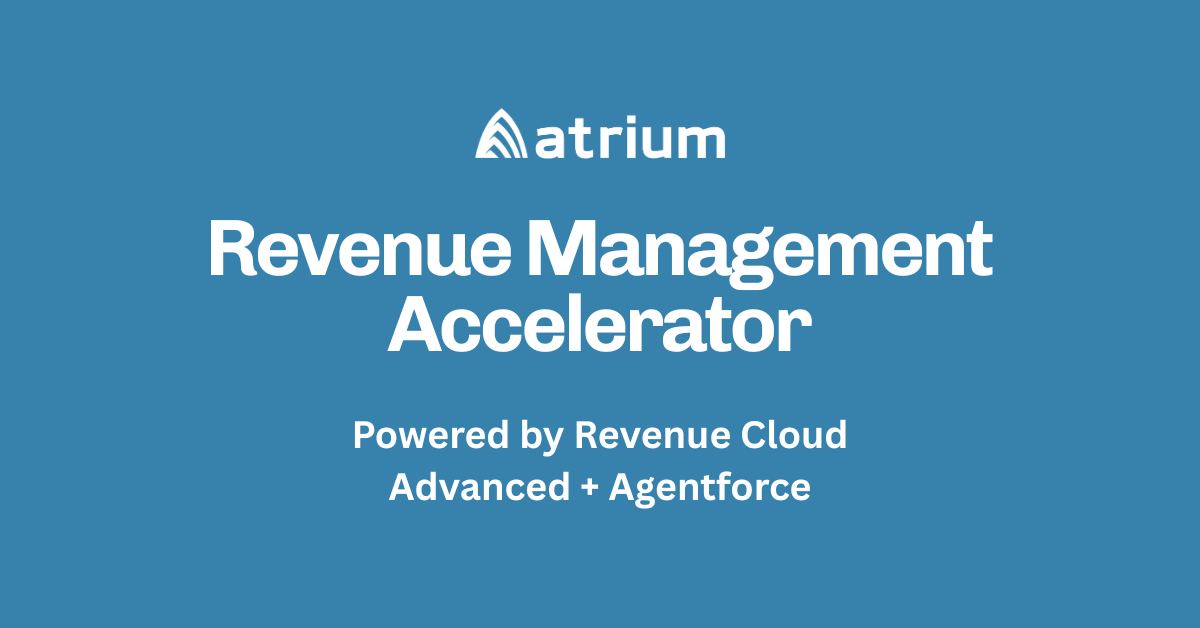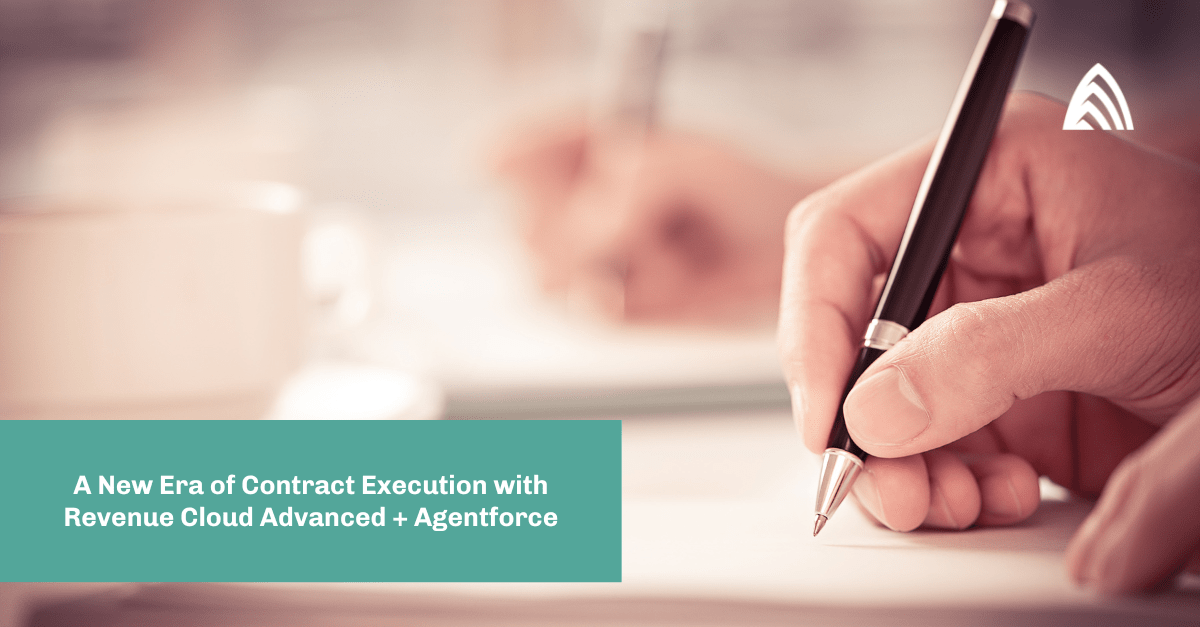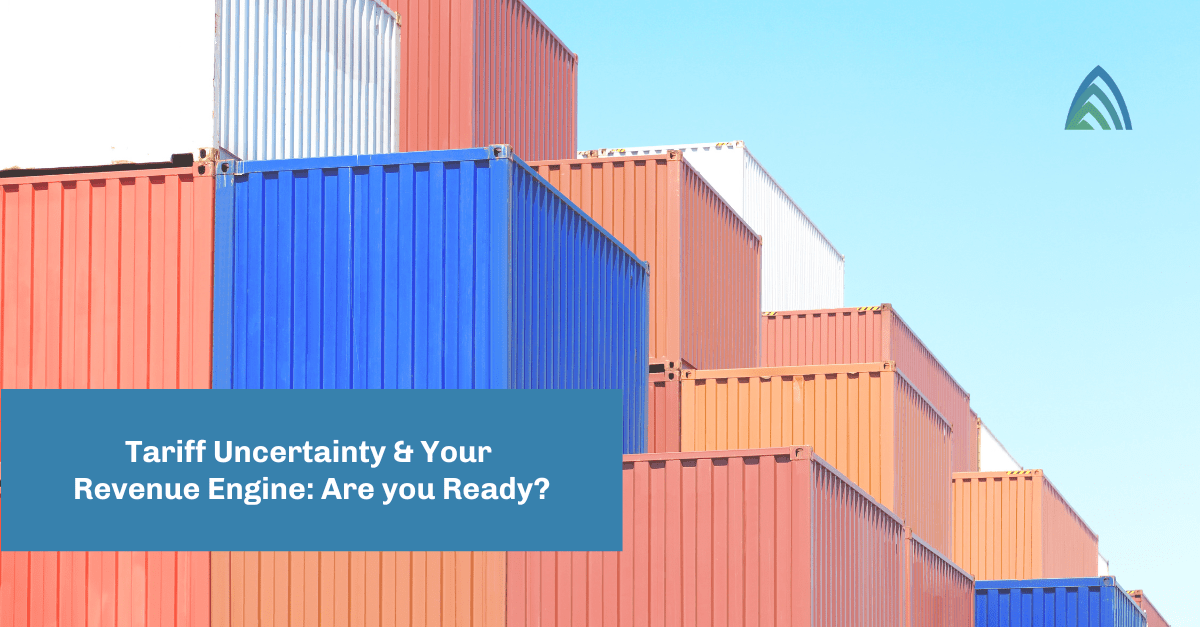Companies exploring ways to modernize their product-to-cash process are taking a hard look at Salesforce Revenue Cloud Advanced (RCA) — and for good reason. RCA offers a flexible, AI-powered, and agent-friendly platform that represents significant advancements from the legacy managed packages it’s meant to replace.
Let’s look at five key drivers behind the shift to RCA that we’re seeing in the market today.
1. Agentforce-ready: Built for AI and automation
Legacy Salesforce CPQ and billing tools were conceived in a technology era before machine learning and AI became critical to the modern ecosystem. They rely on managed packages with closed data models that require complex workarounds to surface data into environments where agents can use it, typically involving custom APIs and integration with Data Cloud.
By contrast, RCA is built natively on Salesforce’s open data platform, designed from the ground up to support Agentforce and AI capabilities. Out of the box, Salesforce provides access to over 100 AI agents that can handle tasks across the entire product-to-cash lifecycle — from guided selling and product recommendations to billing diagnostics, amendments, and even contract negotiations, to name a few.
This open architecture isn’t just about tech flexibility — it’s about unlocking insights that drive the true potential of automation to deliver a personalized and efficient customer experience.
2. Centralized enterprise catalog & price book
A unified product catalog has become essential for modern enterprises to manage complex product SKUs and advanced CPQ configurations across multiple sales and commerce channels. With self-service portals or sales-assisted quoting, RCA enables the use of an API-driven framework across omnichannel experiences, eliminating the pain points of legacy systems where catalogs were isolated, hard to connect, and often restricted to the Salesforce ecosystem.
Additionally, this centralized catalog approach allows for consistent pricing, streamlined maintenance, and better scalability across geographies, business units, and digital experiences. Whether you’re quoting in a B2B commerce portal or building a custom quoting interface, RCA’s catalog can be called from anywhere and supports both direct and indirect selling motions.
3. Expanded CPQ capabilities for scale and complexity
Legacy Salesforce CPQ (originally Steelbrick) was optimized for relatively simple subscription models, not high-volume or highly configurable quoting environments like manufacturing or telco. In fact, Steelbrick lacked support for advanced BOM structures, pushing some vendors to build entirely separate platforms to handle those use cases.
RCA changes the game. It supports significantly more quote line items (up to ~1,000 today) and will potentially scale to 15,000 with the Summer ’25 release. Moreover, critical updates are on the way to support complex product configurations and requirements around usage-based pricing models, making RCA far better suited for high-volume, high-variation quoting scenarios. And because it’s built on an open architecture, you can invoke the quote engine from anywhere, integrating into digital channels, partner tools, or even ERP systems.
4. Seamless contract integration with AI support
Contracts are often considered one of the biggest bottlenecks in the quote-to-cash process, thanks in large part to the back-and-forth between sales and legal teams. RCA introduces built-in contract lifecycle management (CLM) tools, with AI agents handling contract creation, negotiation, and even agent-driven risk assessments.
Legal teams benefit from standardized templates and reduced manual review. Sales teams benefit from faster deal cycles (up to 50% reduction in some cases). Benefits from better contract visibility, obligation tracking, and downstream integrations, like automatically linking service-level agreements (SLAs) from contracts into Salesforce Service Cloud.
All of this is delivered under a single license and is nearing functional parity with standalone CLM platforms like Conga and DocuSign.
5. Headless, API-driven platform
RCA is built for composability. It’s headless, API-first, and fully open, so you can call its functionality from any digital touchpoint. Want to embed quoting into a partner portal? No problem. Need to trace the entire deal lifecycle from opportunity to billing for audit and analytics? RCA has that built-in.
This open platform also enables powerful analytics by combining product usage and billing data with front-end customer behavior. At Atrium, we’re helping clients use this data to inform pricing strategies, build more effective bundles, and power churn prediction models. The ability to marry front-end and back-end data in one platform unlocks a whole new level of intelligence in the revenue process.
Your partner for Revenue Lifecycle Management
Salesforce Revenue Cloud Advanced isn’t just an upgrade — it’s a rethink of how sales, quoting, and revenue operations should work in a world driven by data, AI, and customer expectations.
For companies struggling with the limits of legacy CPQ or looking to scale efficiently, RCA provides the platform and flexibility needed to modernize quote-to-cash and stay competitive. At Atrium, we work to tailor RCA to your business needs and desired outcomes.
Learn more about our Salesforce Revenue Cloud consulting services.






